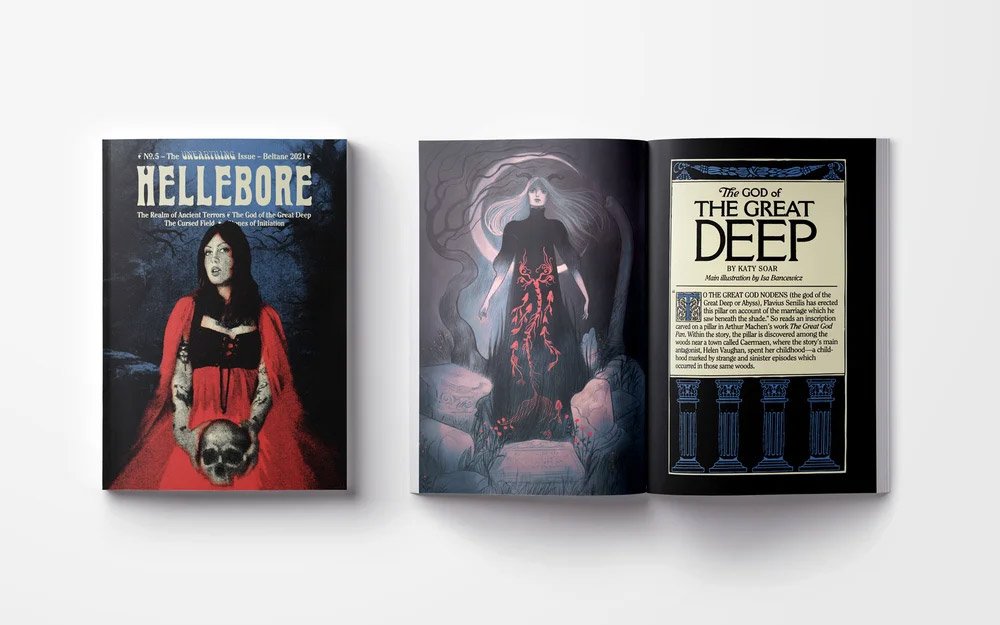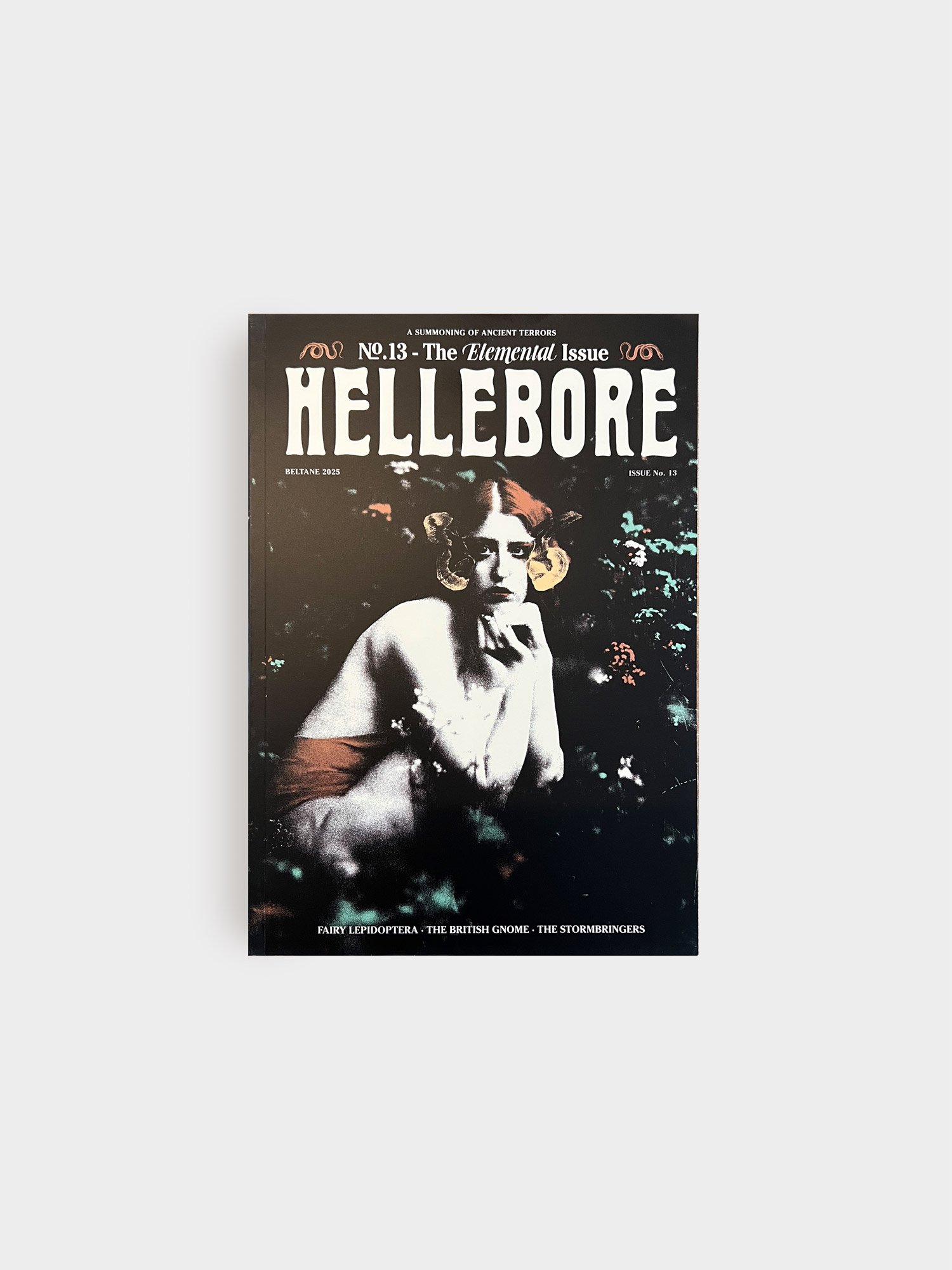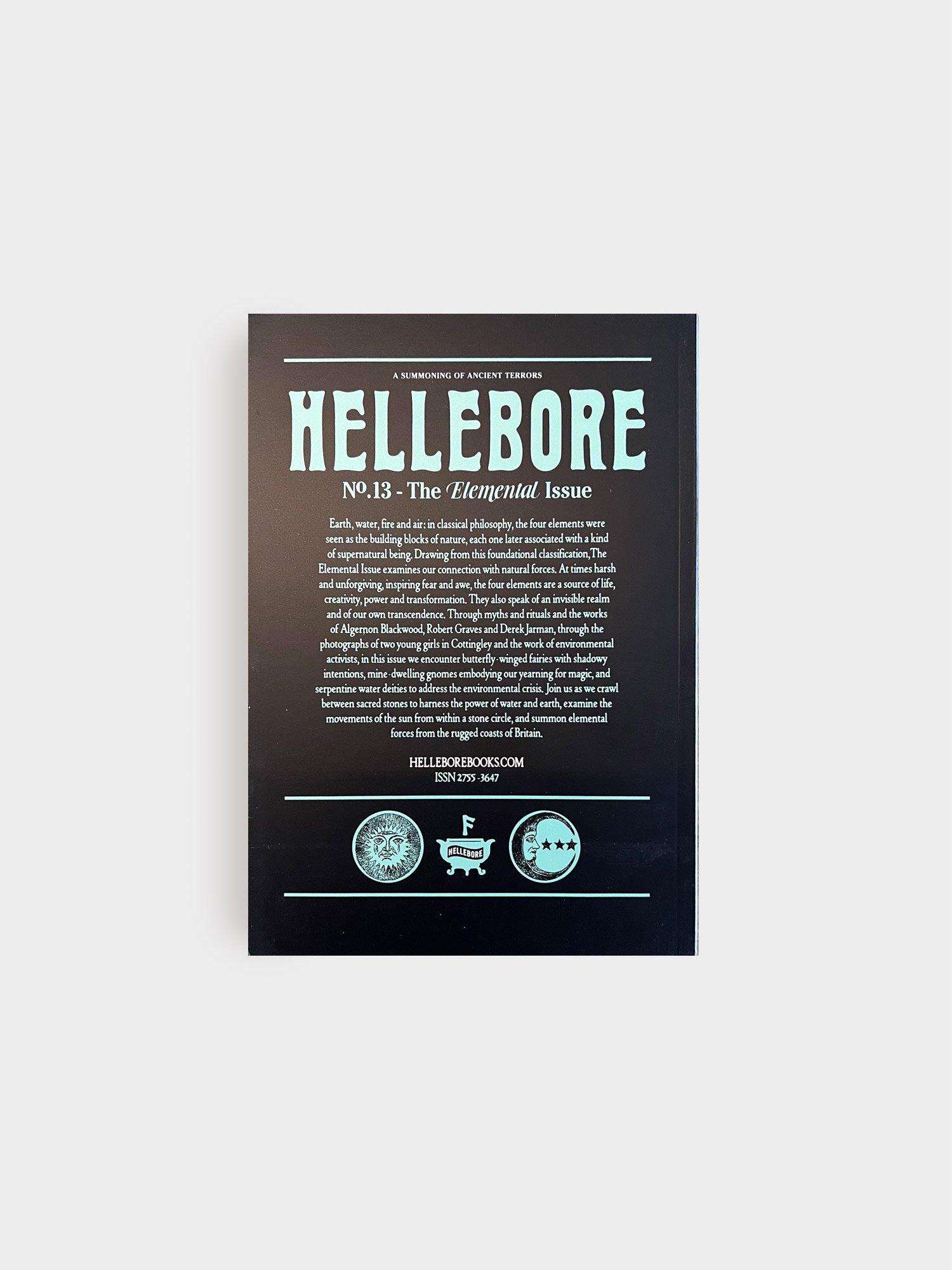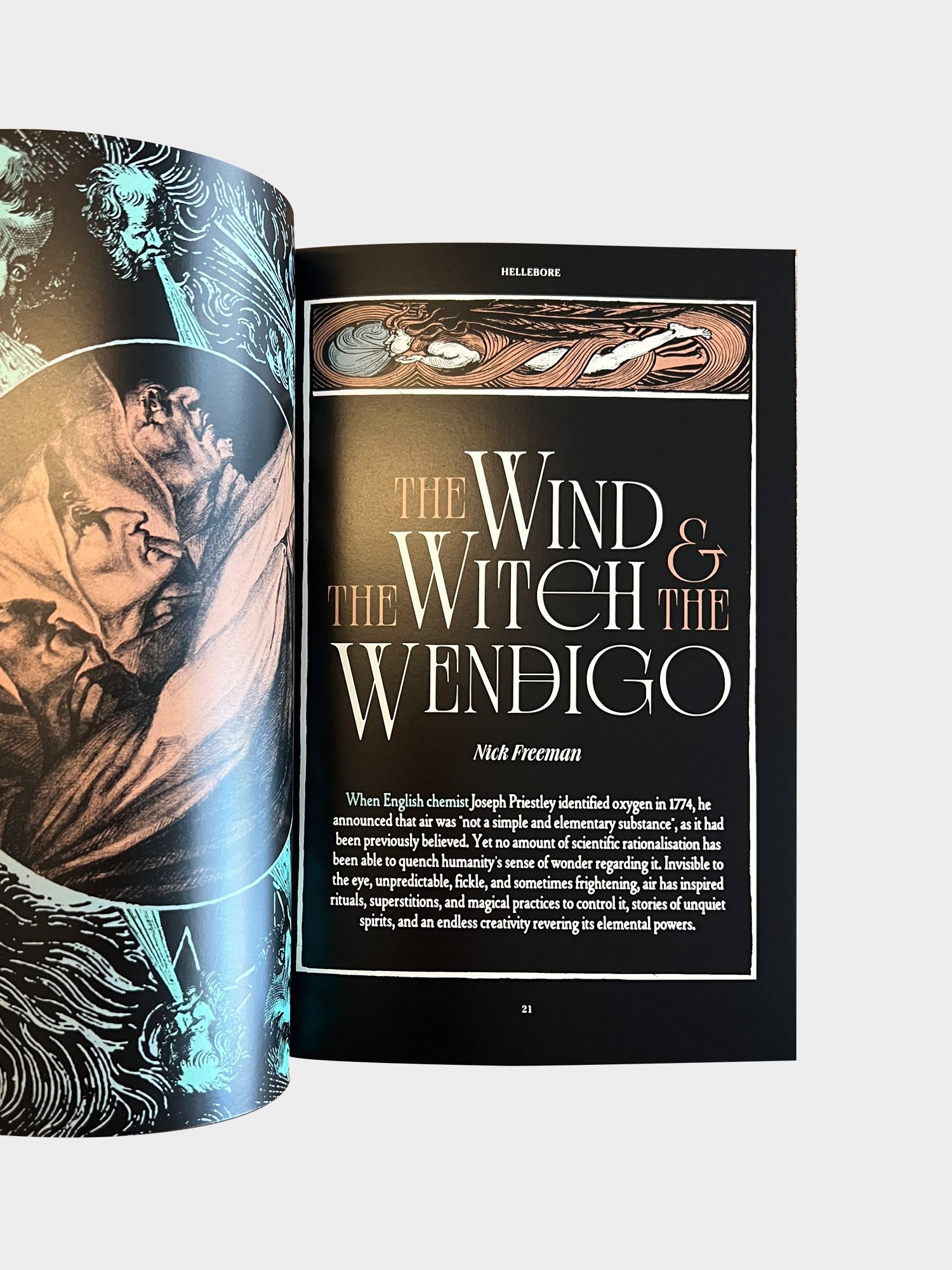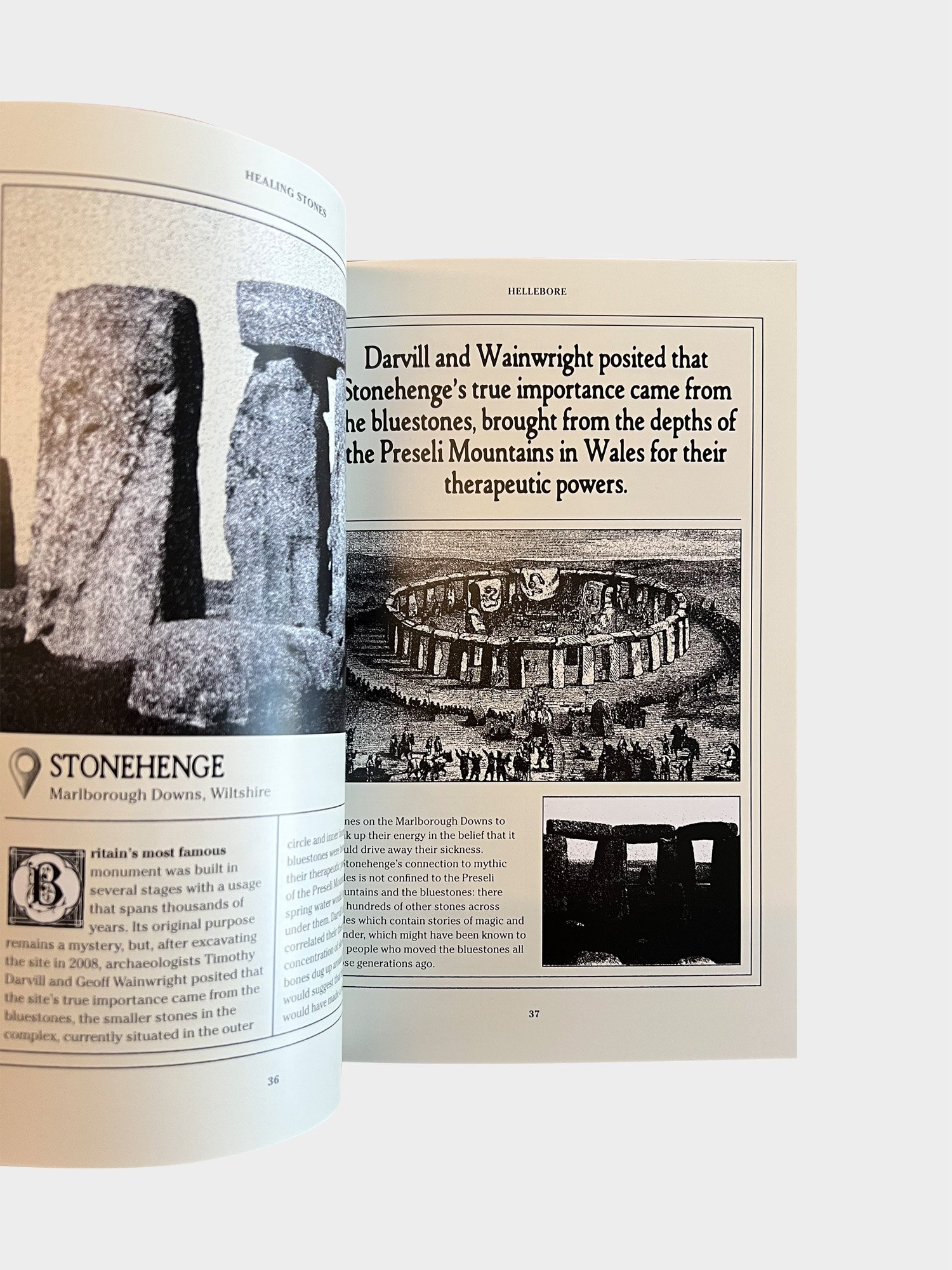-
Hellebore
A5 magazine, 92 pages. Printed on silk-coated paper. Perfect binding.
About the Contributors
Featuring words by Gabriel Moshenska, Katy Soar, David Evans-Powell, Peter Hewitt, Jonah Locksley, Kenneth Brophy, Aleco Julius, Amara Thornton and Subhadra Das. Artwork by Courtney Brooke (Lightwitch), Isa Bancewicz, and Nathaniel Winter-Hébert. Edited by Maria J. Pérez Cuervo.
Description
For the ancients, the subterranean world was the realm of the dead; in the Medieval era it became the abode of demons. With earth we cover our dead. Embedded in our psyche is the idea that what has been buried ought not to return—at least not to this world.
From M.R. James’s Templar whistle sticking out of the sands of an East Anglian beach to the demonic skull emerging from the mud in The Blood on Satan’s Claw, the act of unearthing in folk horror always brings back something long-forgotten, threatening, and uncanny.
In The Unearthing Issue we look at these stories to examine what once was buried and analyse the consequences of its disinterment. The re-emergence of cursed objects, human remains, and Martian spaceships threatens us with the repetition of past traumas and forgotten histories. But if the earth often acts as a repository of our darkest truths, the act of unearthing forces us to confront them. In spite of fears and tribulations, only by learning about our past will we stand the chance of breaking the cycle.
HELLEBORE is a collection of writings and essays devoted to folk horror and the themes that inspire it: folklore, myth, history, archaeology, psychogeography, and the occult.




